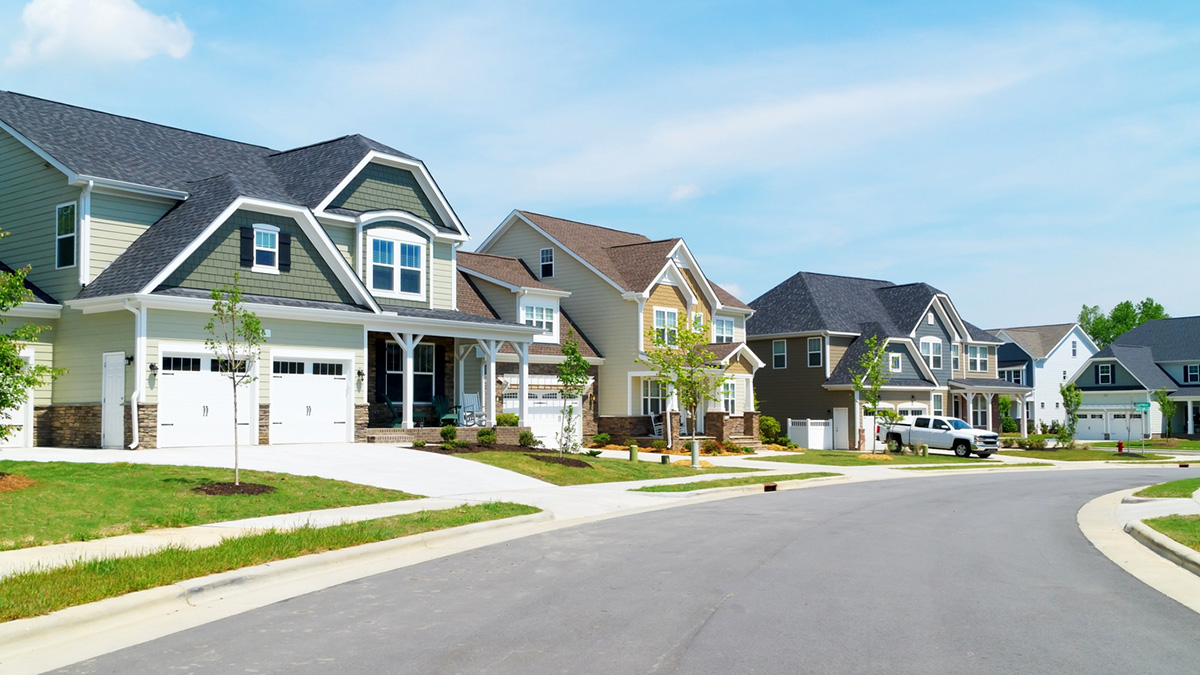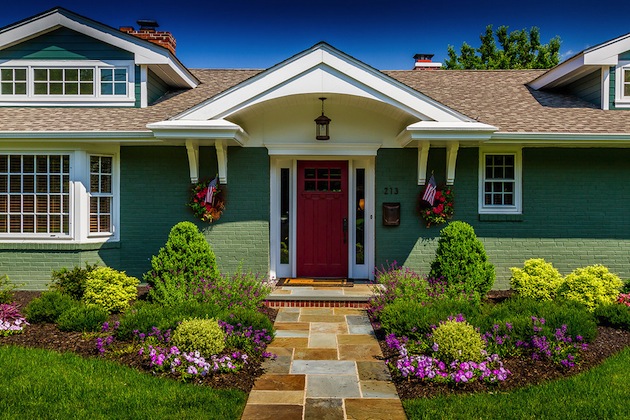Finding the perfect location for your first home can be both exhilarating and overwhelming. The contrast between excitement and anxiety is palpable as you navigate this significant decision. From considering proximity to amenities, evaluating neighborhood safety, to assessing future property value, the choices seem endless. However, fear not! This blog post will provide valuable insights into choosing the right location for your first home. We’ll explore key factors such as community vibes, accessibility to work or school, and potential for growth in the area. So if you’re ready to embark on this journey towards finding your ideal first home location, let’s dive in!
Key Takeaways
- Consider Neighborhood Factors: When choosing the location for your first house, evaluate neighborhood factors such as safety, schools, and community vibe to ensure a comfortable living environment.
- Location is Key: The importance of location cannot be overstated. A well-chosen place can enhance your quality of life and potentially increase the value of your house over time.
- Prioritize Local Amenities: Analyze the availability of local amenities like parks, shopping centers, healthcare facilities, and house to ensure convenience and a fulfilling lifestyle.
- Understand Neighborhood Demand: Understanding the demand for housing in a particular neighborhood can provide insights into future property value and potential investment returns.
- Ensure that the chosen location aligns with your budget, lifestyle, and house needs to avoid financial strain and enjoy a harmonious living experience.
- Centrality and accessibility are crucial factors to consider, as they can impact daily commutes, access to essential services, and overall convenience.
Evaluating Neighborhood Factors
Safety Considerations
When choosing the right location for your first home, safety is an important factor to consider. Begin by checking the area’s crime rates and researching its safety measures. Look for well-lit streets, security systems, and a strong police presence.
Consider how safe you feel in the neighborhood during both day and night. This can be assessed through personal visits and conversations with current residents. Feeling secure in your new home is an essential aspect of settling into a neighborhood.
School Districts
The quality of nearby schools is another crucial factor when evaluating potential neighborhoods for your first home. Explore school ratings and reviews to gauge the educational opportunities available to children in the area. Think about future educational prospects as your family grows.
Evaluate the distance between local schools and potential homes to understand commuting requirements for you or your children. Proximity to educational facilities can significantly impact daily routines, so it’s an important consideration when making this decision.
Area Development
Investigating upcoming developments in a prospective neighborhood is also an essential factor when choosing where to buy your first home. Assessing how new constructions might influence property values helps make informed decisions about long-term investments in real estate.
Furthermore, research any planned infrastructure projects that could affect traffic flow or community amenities such as parks or shopping centers. Understanding these developments will provide insight into how they may shape the future of the neighborhood.
Homeowner Associations
Understanding homeowner association (HOA) regulations should not be overlooked when considering different neighborhoods for your first home purchase. Reviewing HOA fees along with amenities offered allows you to compare what various communities provide their residents.
Consider whether HOA restrictions align with your lifestyle preferences; some associations have strict rules regarding exterior modifications or pet ownership that may not suit everyone’s needs.
Importance of Location
Property Value
When choosing the right location for your first home, it’s crucial to analyze recent property sale prices in the area. This information can give you a clear understanding of the average property value and whether it aligns with your budget. Consider factors that may affect property appreciation, such as proximity to schools, public transportation, and amenities. These elements can significantly impact the desirability of a location and consequently its property value.
Consulting with real estate professionals for market insights is also essential when considering location. Real estate agents possess valuable knowledge about local trends and can provide guidance on areas with high potential for future growth. They can offer data-driven advice on which neighborhoods are experiencing increased demand or are projected to appreciate in value over time.
Future Appreciation
Researching economic growth forecasts for the region is an integral part of selecting the right location for your first home. Understanding how an area’s economy is expected to evolve can shed light on its potential for future appreciation. For instance, if a city is investing in infrastructure development or attracting new businesses, this could lead to increased property values in certain neighborhoods within that city.
Moreover, considering upcoming developments that may boost property value plays a significant role in making informed decisions about location. For example, if there are plans for new commercial centers, parks, or transportation hubs near a particular neighborhood, these initiatives could positively impact property values in that area.
Evaluating historical trends in property appreciation provides valuable insights into how different locations have performed over time regarding their real estate market dynamics. By studying past patterns of price increases and fluctuations across various neighborhoods, you can gain a deeper understanding of which areas have consistently shown strong appreciation rates compared to others.
Analyzing Local Amenities
Necessities Proximity
When choosing the right location for your first home, it’s crucial to assess the proximity to essential services. Consider how close grocery stores, hospitals, and other vital facilities are. Access to public services like fire stations and police departments is also important for safety and security. Evaluate the convenience of running daily errands and access during emergencies.
Living near a grocery store can save time on shopping trips. Being close to a hospital ensures quick medical attention in case of emergencies. Similarly, having easy access to fire stations and police departments provides peace of mind regarding safety concerns.
Researching the distance from your potential home to these amenities will help you determine if it’s a suitable location for your first home.
Outdoor Activities
Exploring nearby parks, trails, and recreational facilities is essential when considering where to live. These outdoor amenities provide opportunities for leisure activities such as picnics or nature walks. Researching sports and fitness activities in the area can help you maintain an active lifestyle.
Living near parks or trails allows easy access to natural spaces for relaxation or exercise. Having recreational facilities nearby offers options for various leisure activities such as swimming or playing sports like tennis or basketball.
Considering these outdoor amenities ensures that you’ll have opportunities for physical activity and recreation without having to travel far from your new home.
Understanding Neighborhood Demand
Market Trends
Staying updated on current real estate market trends is crucial when choosing the right location for your first home. By monitoring housing inventory levels and pricing patterns, you can gain valuable insights into the affordability and availability of homes in a particular area. Understanding the demand-supply dynamics in the local housing market helps you make informed decisions about where to invest in your first home.
Researching market trends allows you to identify areas experiencing growth, which could indicate a desirable location for your first home. For example, if a neighborhood has low housing inventory but high demand, it may be an opportune time to buy as prices are likely to increase. On the other hand, if there’s an oversupply of homes with stagnant demand, it might not be the best investment at that time.
Considering these factors empowers you to make strategic decisions based on current conditions rather than future speculation.
Area Popularity
When choosing the right location for your first home, researching the overall appeal and desirability of a neighborhood is essential. Observing demographic shifts and community engagement provides insight into whether an area is thriving or declining. For instance, if young families are moving into a neighborhood and there’s active community involvement, it suggests a vibrant and growing area that may offer long-term value for homeowners.
Considering social events and cultural attractions in the area can give you a sense of its liveliness and potential for personal enjoyment. A neighborhood with regular farmers’ markets or art festivals signifies an engaged community with diverse interests.
Budget and Lifestyle Alignment
Income Sources
When choosing the right location for your first home, it’s crucial to assess the local income sources. Research the job opportunities in the area and explore different industries present. Consider if there are diverse income streams within the community, which can provide stability even during economic fluctuations. Moreover, look into the potential for career growth and entrepreneurial opportunities.
For instance, if you’re considering a neighborhood with a growing tech industry, it could indicate promising career prospects in that field. Similarly, an area with a mix of corporate offices and small businesses might offer diverse employment options.
Researching these aspects will help you align your future income sources with your desired lifestyle when choosing where to buy your first home.
Expense Planning
Estimating living costs is essential when deciding on a location for your first home. Factor in expenses such as utilities, property taxes, insurance costs, and any homeowner association fees that may apply in certain communities. Consider potential maintenance expenses associated with homeownership like lawn care or repairs.
Creating a comprehensive budget is vital; this should include mortgage payments along with other financial obligations such as car loans or student debt. By factoring all these elements into your expense planning process before making a decision about where to live can prevent unexpected financial strain down the line.
For example:
- If you’re looking at two neighborhoods—one has higher property taxes but lower utility costs while another has lower property taxes but higher insurance premiums—you’ll need to weigh these factors against each other.
- A location closer to urban areas might have higher living costs but could save commuting expenses due to proximity to work centers.
Centrality and Accessibility
Public Transport
When choosing the right location for your first home, it’s crucial to evaluate access to public transportation options. Research bus routes, train stations, or other commuting alternatives. Consider future transit expansions or improvements that may enhance accessibility.
For instance, if you’re considering a neighborhood with limited public transport access, it might lead to challenges in commuting to work or other essential destinations. On the contrary, choosing an area with well-connected public transport can significantly ease daily commutes and reduce reliance on personal vehicles.
Exploring these options is vital as they directly impact your daily routine and overall convenience when living in a particular location.
Commute Times
Another critical aspect of centrality and accessibility is calculating commute times to work or frequent destinations. Understanding traffic patterns during peak hours is essential for gauging the potential stress levels associated with daily commutes.
Consider this scenario: If you find a beautiful house in an area with reasonable housing prices but discover that the commute time to work would be excessively long due to heavy traffic congestion, it could significantly impact your quality of life.
Exploring alternative commuting routes can also provide valuable insights into different travel options available within a specific area. This research allows you to make informed decisions about which neighborhoods align best with your lifestyle needs while ensuring convenient access to key locations such as workplaces and amenities.
The Role of Location in Homebuying
Long-Term Investment
Evaluating the long-term potential for property appreciation is crucial. Research shows that homes in sought-after areas tend to appreciate more rapidly than those in less desirable locations. For example, properties near good schools or public transportation hubs often experience higher demand and increased value over time.
Considering future development plans impacting investment value is also important. Areas earmarked for infrastructure improvements such as new highways, public transport links, or commercial developments can significantly boost property values. On the contrary, buying a home in an area with stagnating growth prospects may not yield substantial returns on investment.
Researching economic stability of the location is another key factor when buying your first home. Assess the employment opportunities and diversity of industries present within the area. A strong job market and diverse economy are indicative of a stable location that could potentially offer sustained property appreciation over time.
Quality of Life
Assessing overall livability factors such as air quality, noise levels, and access to green spaces is essential when considering home locations. Living close to industrial areas or airports might result in poor air quality and high noise levels which can affect your daily life negatively.
Evaluating healthcare facilities, recreational opportunities, and educational institutions nearby should also be taken into account when choosing where to buy your first home. Access to good healthcare services ensures peace of mind while proximity to parks, gyms, or other recreational facilities contributes positively towards leading a healthy lifestyle.
Considering community engagement and social connectivity plays a vital role too; living within a vibrant community with active neighborhood associations fosters a sense of belonging and security among homeowners.
Pros and Cons of Homeowner Associations
Benefits
When choosing the right location for your first home, it’s crucial to highlight the positive aspects of living in the chosen neighborhood. Whether it’s proximity to essential amenities, a strong sense of community, or access to recreational facilities, showcasing these unique advantages can significantly influence your decision. For example, if you’re an outdoor enthusiast, a neighborhood with nearby parks and hiking trails could be a major selling point. On the other hand, if you prioritize convenience and accessibility, emphasizing the proximity to public transportation or shopping centers is essential.
Discussing specific perks that cater to different lifestyles is also important when considering where to buy your first home. For instance, families may value neighborhoods with good schools and safe playgrounds while young professionals might prioritize areas with vibrant nightlife and trendy dining options. By highlighting these lifestyle-specific benefits, individuals can better envision how their daily lives would be enriched by choosing a particular location.
Drawbacks
Addressing potential challenges or limitations of the area is equally important when contemplating choosing the right location for your first home. It’s vital to discuss any drawbacks related to location-specific factors such as traffic congestion during peak hours or limited parking availability. Being transparent about considerations that may not suit everyone helps prospective homeowners make well-informed decisions based on their individual needs and preferences.
Moreover, discussing any drawbacks related to homeowner associations (HOAs) is crucial. While HOAs offer benefits like maintaining common areas and upholding aesthetic standards within a community, they also come with potential drawbacks such as strict regulations regarding property modifications or additional monthly fees for amenities some residents may not use frequently.
Projecting Future Growth
Infrastructure Plans
Research upcoming infrastructure projects in the vicinity to gauge the potential growth of the area. Understanding how future developments may impact daily life is crucial when choosing a location for your first home. For instance, if there are plans for new highways or public transportation systems, it could mean easier accessibility and increased property value.
Consider how infrastructure improvements can enhance property value. Upcoming infrastructure projects such as new schools, hospitals, or shopping centers can significantly elevate the appeal of a neighborhood. These amenities not only make everyday life more convenient but also attract more residents and businesses to the area.
Community Expansion
Explore ongoing or planned community expansion projects, such as new residential developments or commercial centers nearby. Understanding how expansion may influence neighborhood dynamics is essential before making a decision about where to purchase your first home. For example, an expanding community may bring in diverse demographics and create vibrant local economies.
Consider potential benefits or challenges associated with community growth. While community expansion can bring new opportunities and services, it might also lead to increased traffic congestion and noise levels. Evaluating these factors will help you anticipate how your chosen location might change over time.
Closing Thoughts
You’ve now gained a deeper understanding of the crucial factors to consider when choosing the right location for your first home. From evaluating neighborhood demand to aligning your budget with your lifestyle, each aspect plays a significant role in this decision-making process. As you embark on this exciting journey of homeownership, remember that the perfect location is not just about convenience; it’s about creating a space where you can thrive and build lasting memories.
Now armed with these insights, take the time to explore different neighborhoods, envision your future, and make an informed decision that resonates with your aspirations. Your first home is more than just a place to live; it’s the foundation for the life you’re building. So, go forth and find that ideal location where your dreams can take root and flourish.
Frequently Asked Questions
How can I evaluate neighborhood factors when choosing the right location for my first home?
When evaluating neighborhood factors, consider safety, schools, amenities, and community vibe. Take a stroll around the area at different times to get a feel for it. Check online resources and talk to locals to gather insights.
Why is centrality and accessibility important when choosing the right location for my first home?
Centrality and accessibility impact your daily life. Consider proximity to work, transportation options, and ease of access to essential services. A central location can save time and money on commuting while providing convenience.
What are the pros and cons of homeowner associations that I should be aware of before buying my first home?
Homeowner associations offer amenities like maintenance services but come with rules and fees. Assess if their regulations align with your lifestyle preferences. Understand their financial health as it impacts your property’s value.
How do I align my budget with lifestyle when choosing the right location for my first home?
Evaluate your priorities – whether you prefer urban conveniences or suburban tranquility. Balance affordability with quality of life by considering housing costs alongside living expenses in various locations.
Why is analyzing local amenities crucial in selecting the right location for my first home?
Local amenities contribute significantly to your daily routine – from grocery stores to parks or entertainment venues. Accessible facilities enhance your lifestyle while potentially increasing property value over time.






